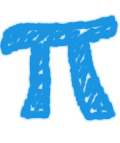Modeling the Dynamics of Infectious Diseases
Infectious diseases continue to have a major impact on individuals, populations, and the economy, even though some of them have been eradicated (e.g. small pox). Unlike many other ecological systems, many infectious diseases are well documented by spatio-temporal data sets of occurrence and impact. In addition, in particular for childhood diseases, the dynamics of the disease in a single individual are fairly well understood and fairly simple. As such, infectious diseases are a great field for mathematical modeling, and for connecting these models to data. In this article, we concentrate on three issues, namely (1) comparative childhood disease dynamics and vaccination, (2) spatio-temporal disease dynamics, and (3) evolution in diseases with multiple strains. The mathematical techniques used in the analysis of disease models contain bifurcation theory for ODEs, wavelet analysis, stochastic simulations and various forms of data fitting.
- 4643 reads



